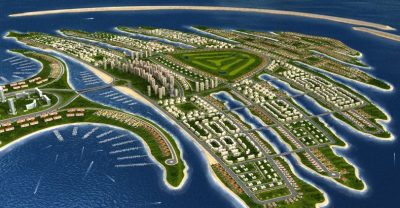 From earthquakes to water scarcity, the Middle East faces its fair share of natural disasters but countries are only now starting to take disaster risk reduction seriously
From earthquakes to water scarcity, the Middle East faces its fair share of natural disasters but countries are only now starting to take disaster risk reduction seriously
Over the last 25 years, the Arab region has suffered 276 disasters in which 100,000 people died, 1.5 million were left homeless and 10 million affected – yet the region has systematically failed to prioritize disaster preparedness.
This all looks set to change, as for the first time ever the region has a strategy which outlines a commitment to reduce risk and vulnerability for Arab countries. And whilst experts state that the commitment is still low, they have welcomed the move as a step in the right direction.
“The region is affected by several hazards: earthquakes, floods, landslides and drought. However, disaster risk reduction has not been a priority for governments until recently,” Luna Abu-Swaireh, regional programme officer at the Cairo office of the UN International Strategy for Disaster Reduction (UNISDR), told IRIN.
As part of the commitment to reduce risk, several Middle Eastern countries including Syria, Jordan and Yemen have established a national database which should allow them to estimate the level of risk and improve their response when disaster strikes.
One of the risks the Middle East region faces is that of earthquakes in the Jordan rift valley which extends from the Red Sea, Palestine, the Dead Sea to Lebanon. This puts around two thirds of Jordan’s population, the entire population of Lebanon and the urban Syrian population that lives within 50km of the fault line at risk.
Flooding in places such as Saudi Arabia as well as increasing water scarcity and food security has also increased the vulnerability of Arab populations to disasters. For example, last year a drought in Syria meant that 500,000 people were forced to abandon their homes in east Syria in search of water and food.
Egypt and Morocco will also be developing national disaster loss databases to ramp up their ability to deal with disasters whilst reducing the vulnerability of their populations.
“The impact of disasters on the economics of the Arab countries coupled with the problems they are already facing in terms of poverty, etc., makes it a challenge to engage in disaster risk,” Abu-Swaireh explained. “You need to work today on disaster reduction, to make sure your system does not collapse in the face of a disaster.”
The UNISDR has plans to bring together the relevant governments, civil society organisations and businesses at the end of 2011 to help them translate policy into action and increase investment in risk reduction.
:: Image via nimboo/flickr.
:IRIN
For more on natural disasters in the Middle East see:
Arab Scientists Model Red Sea and Persian Gulf To Stop Flash Floods
Saudi Citizens Release Documentary Criticizing Lack of Flood Protection
500,000 Syrians Flee Drought-Stricken Zone


